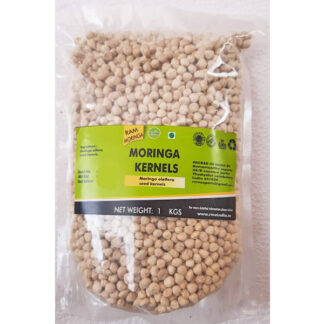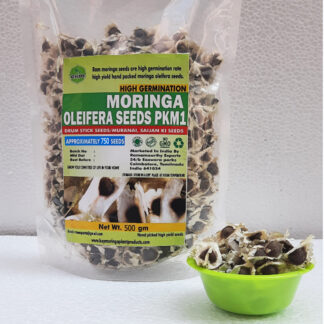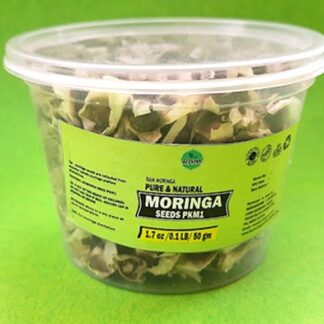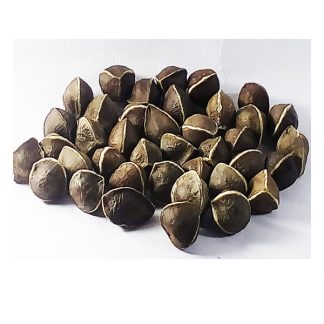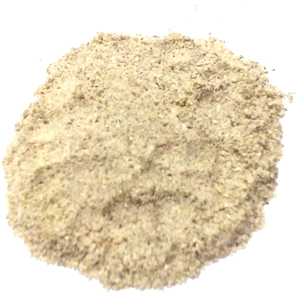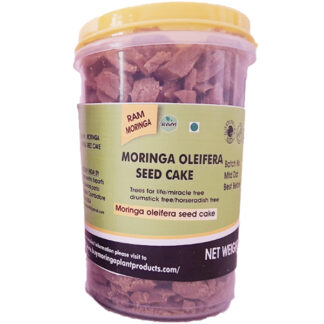Buy moringa seed cake 500 Gm
$5.00 Original price was: $5.00.$3.00Current price is: $3.00.
Moringa seed cake is byproduct of moringa oi extraction from the moringa seed kernel. We are extracting moringa oil by the cold pressed method from moringa seeds kernel. Once completed the moringa oil extraction , the moringa seeds kernels are changed to moringa seed cake.
Coagulation and Flocculation: Moringa seed cake contain special proteins, particularly two cationic proteins named moringa oleifera seed albumin (MOSAL) and moringa oleifera seed globulin (MOSGL), which act as natural coagulants. These proteins bind to fine particles, bacteria, and other contaminants in the water, causing them to clump together (coagulate). The clumps then settle out of the water (flocculate), making the water clearer and safer to drink.
MOSAL(moringa oleifera seed albumin): A Natural Powerhouse for Water Purification.
MOSAL, short for moringa oleifera seed albumin, is a cationic protein found in the seeds of the moringa oleifera tree. This remarkable protein is nature’s very own water purification champion, thanks to its exceptional properties:
- Coagulant: MOSAL acts as a coagulant, binding to fine particles, bacteria, and other impurities in water. These bonds cause the impurities to clump together (coagulate), making them heavier and easier to remove.
- Flocculant: Once the impurities are clumped together, MOSAL’s flocculant properties come into play. These properties encourage the clumps to settle out of the water (flocculate), leaving behind clearer and safer water.
- Antibacterial and antifungal: MOSAL possesses inherent antibacterial and antifungal properties. This adds an extra layer of protection by eliminating harmful bacteria and fungi that might be present in the water.
MOSAL in Action:
MOSAL’s effectiveness in water purification has been well-documented through various studies and real-world applications:
- Reduces turbidity: MOSAL can significantly reduce turbidity, the cloudiness caused by suspended particles in water. This makes the water appear cleaner and improves its overall quality.
- Removes bacteria: Studies have shown that MOSAL can effectively remove various bacteria from water, including E. coli and Salmonella typhi. This makes MOSAL-treated water safer for drinking.
- Improves overall water quality: By removing impurities, bacteria, and fungi, MOSAL can significantly improve the overall quality of water. This makes it suitable for drinking, cooking, and even irrigation.
MOSAL: A Sustainable and Affordable Solution
MOSAL’s appeal as a water purification agent lies not just in its effectiveness but also in its sustainability and affordability:
- Natural and safe: Unlike chemical-based methods, MOSAL is a natural and safe way to purify water. It doesn’t leave behind any harmful residues or alter the taste of the water significantly.
- Readily available: Moringa trees are widely grown in tropical and subtropical regions, making MOSAL a readily available resource in many areas.
- Cost-effective: Extracting and using MOSAL is relatively simple and inexpensive, making it a cost-effective water purification solution for communities with limited resources.
Moringa oleifera Seed Globulin (MOSGL): Another Champion of Natural Water Purification
MOSGL, short for moringa oleifera seed globulin, stands alongside MOSAL as another powerhouse protein found in the seeds of the moringa tree. While often overshadowed by its close cousin MOSAL, MOSGL also plays a crucial role in natural water purification, offering unique properties and contributing to the overall effectiveness of moringa-based methods.
MOSGL’s superpowers:
- Coagulant: Similar to MOSAL, MOSGL acts as a coagulant, binding to impurities in water and causing them to clump together. This facilitates their removal through sedimentation or filtration.
- Charge neutralization: Unlike MOSAL, which has a positive charge, MOSGL carries a negative charge. This allows it to neutralize the positive charges of certain contaminants, further promoting coagulation and settling.
- Antimicrobial properties: MOSGL exhibits antimicrobial properties, inhibiting the growth of bacteria and fungi in water. This adds another layer of protection against waterborne pathogens.
MOSGL in action:
- Complementary to MOSAL: MOSGL’s properties complement those of MOSAL, working synergistically to enhance the overall water purification effect. The combined action of both proteins broadens the spectrum of contaminants they can target and improves the efficiency of the process.
- Effective against specific contaminants: Studies have shown MOSGL’s effectiveness against certain contaminants that MOSAL might struggle with, such as viruses and protozoa. This makes moringa seed extracts containing both proteins even more versatile for water purification.
MOSGL’s potential:
- Further research: While research on MOSGL is ongoing, its full potential as a water purification agent is still being explored. Studies are investigating its efficacy against various contaminants under diverse water conditions.
- Developing MOSGL-based applications: Scientists are exploring ways to isolate and utilize MOSGL in specific water purification technologies, potentially leading to targeted solutions for different water quality challenges.
Overall, MOSGL, along with MOSAL, represents the immense potential of moringa seeds for natural water purification. Their combined properties offer a safe, sustainable, and effective approach to improving water quality and access to safe drinking water for communities around the world.
Visit our social media pages
Moringa seed cake process diagram
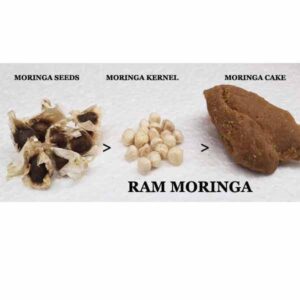
Description
Moringa seed cake, also known as moringa oil cake or simply moringa cake, is the residue left over after extracting oil from the seeds of the moringa oleifera tree. While initially considered a byproduct, moringa seed cake has gained significant recognition for its diverse benefits beyond oil production. Here’s a closer look at this versatile material:
From Byproduct to Valuable Resource:
- Nutrient-rich: Despite oil extraction, moringa seed cake retains a wealth of nutrients. It boasts high protein content (around 60%), essential amino acids, vitamins, minerals, and beneficial fatty acids. This makes it a valuable source of nutrition for livestock, poultry, and even fish feed.
- Natural coagulant: Similar to the whole seeds, moringa seed cake contains MOSAL and MOSGL, the potent coagulating proteins. This property makes it a natural alternative to chemical coagulants in water purification. By binding to impurities and causing them to settle, moringa seed cake can significantly improve water clarity and quality.
- Organic fertilizer: Rich in organic matter and essential nutrients, moringa seed cake acts as a potent fertilizer. It improves soil fertility, aeration, and water retention, promoting healthy plant growth and crop yields. Additionally, its antimicrobial properties can suppress soilborne pathogens and enhance overall soil health.
- Food and beverage applications: Ground moringa seed cake can be incorporated into various food and beverage products as a nutritious and functional ingredient. It can be added to flours, baked goods, soups, and even teas for its protein content, dietary fiber, and unique flavor profile.
Moringa Seed Cake: A Sustainable Solution:
- Waste reduction: Utilizing moringa seed cake diverts it from waste streams, promoting sustainability and reducing environmental impact. This aligns with the principles of circular economy, maximizing resource utilization and minimizing waste generation.
- Economic opportunities: The diverse applications of moringa seed cake create economic opportunities for farmers and communities involved in moringa cultivation and processing. It adds value to the entire moringa value chain, promoting sustainable livelihoods and economic development.
- Dosage and efficacy: The optimal dosage of moringa seed cake for water purification, fertilizer, or food applications can vary depending on specific needs and desired outcomes.
Ref: https://link.springer.com/article/10.1007/s13201-016-0499-8





